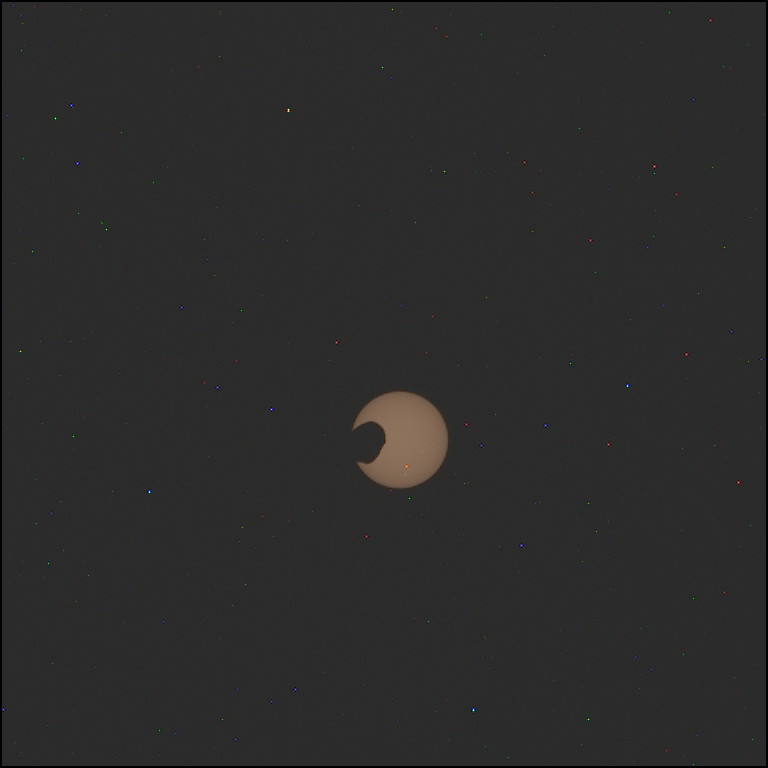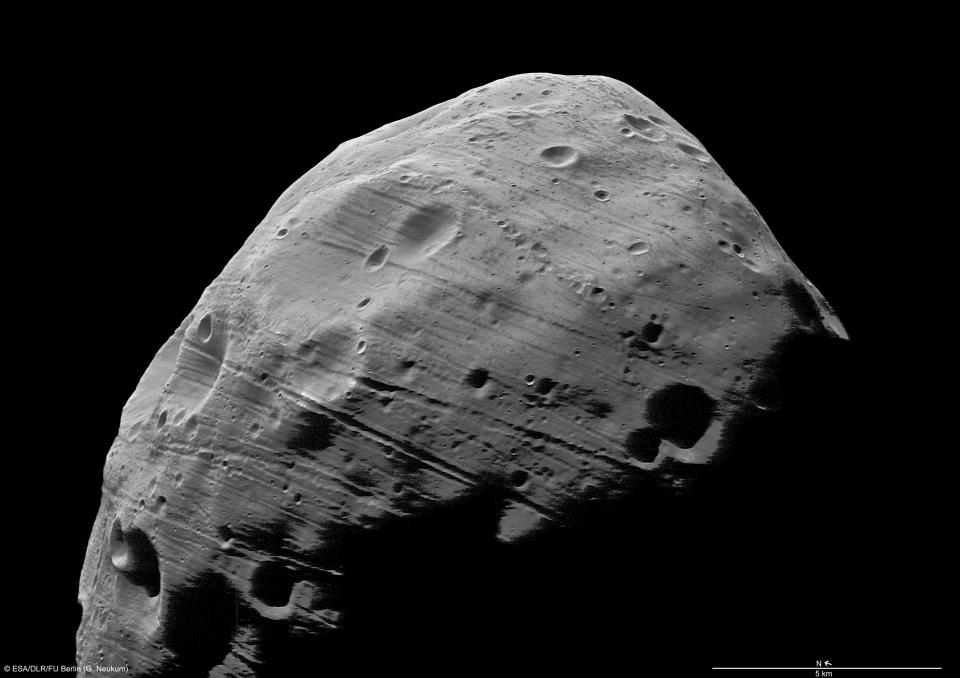What does a solar eclipse look like from Mars? NASA shares photos ahead of April 8 totality
While we earthlings prepare for a rare total solar eclipse that will pass over North America, Mars had one of its own earlier this year.
A timelapse of photos taken by NASA's Perseverance rover Feb. 8 showed the Red Planet's tiny doomed moon Phobos crossing in front of the much-larger sun. One month earlier, Mars' other moon, Deimos, completed a transit of its own.
The U.S. space agency shared timelapses of the incredible celestial events last week in preparation for the total solar eclipse that today will shroud a long swath of the U.S. in uncharacteristic darkness.
Earth isn’t the only planet in our solar system that experiences solar eclipses – Mars does, too!
While Martian moons aren’t the right size or distance to fully cover the Sun, @NASAPersevere recently spotted some cool transits. ?? pic.twitter.com/TeB0HUnQYG— NASA Mars (@NASAMars) April 4, 2024
By now, the millions of Americans who plan to witness today's total solar eclipse likely have some concept of what's in store. But for those wondering what an eclipse looks like on another planet in the solar system, here's what to know about what Mars experienced.
Solar eclipse experiment: Here's why NASA is launching 3 sounding rockets into space during the total solar eclipse
Mars solar eclipse: See Phobos, Deimos, transiting the sun

From Mars' Jezero Crater, the Perseverance rover, which landed on the planet in 2021, captured a series of images on Feb. 8 of the odd-shaped tiny moon Phobos passing in front of the much-larger sun. Engineers from NASA's Jet Propulsion Laboratory later uploaded 68 images of the solar eclipse to an online collection.
The rover's left Mastcam-Z camera is one of two scouting imagers placed high on the mast of Perseverance that is famous for capturing panoramic landscape views of the Red Planet. On that day, though, the camera was instead angled skyward as the asteroid-sized Phobos passed overhead.
Like Earth, any planet with a moon can experience eclipses. But for planets with moons as small as those of Mars,' the bodies may be either too small or too distant to create a total solar eclipse such as the one fast approaching Earth.
In the case of Phobos, the Martian moon's size and shape ? roughly 17 miles long on its longest side ? make it impossible for it to completely cover the sun's disk to create a total solar eclipse on Mars like the one headed Earth's way in only a matter of hours.
Same goes for the smaller Deimos, despite being 16 times closer to the planet than our moon is to Earth. Deimos recently had a transit of the sun of its own in January, a timelapse of which NASA shared Thursday in a thread on the social media site X along with Phobos' eclipse of the sun.
The visuals NASA shared show a silhouette of Deimos, which is just 7.5 miles in diameter, transiting the sun. The transit took about two minutes, though NASA said it sped the video up for social media.
As for Phobos, the transit is shown in real time.
The rover then spotted Phobos eclipsing the Sun in February. The video shows the transit in real time.
Phobos is the larger of the two Martian moons – coming in at a diameter of 14 miles (22 km). Eons from now, Phobos’ orbit is expected to send it toward the Martian surface. pic.twitter.com/3T8ORNWGcx— NASA Mars (@NASAMars) April 4, 2024
Mars rovers have observed solar eclipses for years
It's not the first time Mars rovers have observed Phobos, which is on a collision course with the Red Planet, crossing in front of the sun. But each time these eclipses are observed, scientists say they can measure subtle shifts in Phobos’ orbit as that fatal day approaches.
While Spirit and Opportunity made the first observations in 2004, it wasn't until 2019 that Curiosity became the first to record video of the event, NASA has said.
"Each time these eclipses are observed, they allow scientists to measure subtle shifts in Phobos’ orbit over time," NASA explained after a previous eclipse in 2022. "The moon’s tidal forces pull on the deep interior crust and mantle of the Red Planet; studying how much Phobos shifts over time reveals something about how resistant the crust and mantle are, and thus what kinds of materials they’re made of."
Phobos is on a collision course with Mars
Translated as "fear" in Greek, Phobos is one of two Martian moons discovered in 1877 by American astronomer Asaph Hall.

Orbiting Mars three times a day, Phobos is much closer to the planet's surface than its brother Deimos, according to NASA. Gouges from thousands of meteorite impacts mark the moon, which scientists believe was nearly shattered by a giant impact long ago.
But unlike Deimos ("dread," in Greek), which is drifting ever-outward and will eventually leave Mars' orbit, Phobos is on a collision course with the Red Planet.
Mars' strong gravity is drawing Phobos about six feet closer to it every century.
Don't worry: The worlds' impending collision won't occur in our lifetime. Sometime within the next 50 million years, the moon is expected to either crash into Mars or break up into a planetary ring like Saturn's.
Eric Lagatta covers breaking and trending news for USA TODAY. Reach him at [email protected]
This article originally appeared on USA TODAY: What does a solar eclipse look like from Mars? NASA shares timelapse
